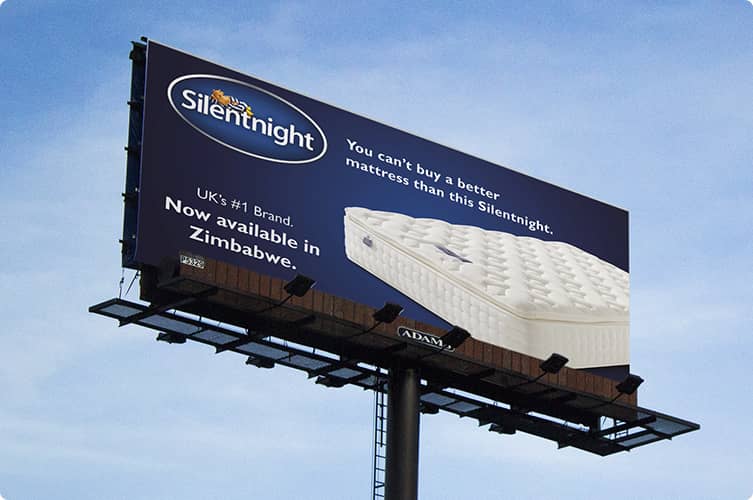The Coronavirus outbreak has made business continuity a growing challenge across the globe. While some businesses have shut shop, many are struggling to stay afloat. A pressing issue that humankind is currently facing is ensuring clear and effective communication.
The lockdown (although easing in phases) and the necessary social distancing has made it difficult for businesses to broadcast and exchange information effectively. Sure, social media is an efficient tool to leverage in such a scenario; however, nothing quite beats the ability to communicate face-to-face easily!
An efficient marketing strategy for businesses to promote their products and services would be via the offline route. If done right, outdoor ads can significantly impact the subconscious minds of passersby and help amp up the brand recall value.
Unfortunately, in the UK, the year started with 11.4% growth for digital out-of-home (DOOH) advertising spend. Still, the coronavirus pandemic has impacted the market in Q2, and this positive growth may not return until 2021.
Consumers’ assumption that there won’t be a COVID-19 before next June means they will not resume normal out-of-home activities until that time. But does that mean that businesses that are slowly opening should not do any offline marketing campaigns for themselves? No, absolutely not!
A majority of business owners view digital marketing as a prime platform for promoting their products and services because it is fast, flexible, and trackable. It drives website traffic and increases conversions.
Digital marketing increases brand awareness and credibility and meets prospective customers where they are. However, that comes with the cost of facing intense competition from other businesses chasing consumer dollars.
Offline advertising, on the other hand, can make a significant impact in the subconscious minds of the customer base through billboards, signage, vehicular ads, window graphics, and more and help amp up the brand recall value.
Chances are you would have also come across such offline media at some point in time, especially now as posters and flyers are being used extensively to deliver information about the pandemic.
Clean up your website structure
Google and other search engines prefer websites that are not difficult to crawl. This calls for you to add a clean code to the back-end of your site, preferably an organised HTML code. It would help if you also optimised your web pages for SEO, with the inclusion of relevant keywords and great content that your target customers are searching for. SEO helps to drive organic traffic from search engines like Google.
Another critical step to increase website traffic is to submit your site to online business directories like Yelp and Google My Business. This helps add legitimacy to your website, drive traffic and increases your chances of ranking higher on search results.

If your business is looking to gain visibility outdoors, then offline marketing channels are pretty viable options. Let us take a look at three significant benefits of going offline during the coronavirus pandemic:
1. Cost-effectiveness
The cost per exposure to outdoor ads is unbeatable. Whatever channel of offline marketing you choose and whenever you decide to opt for it – this will be a one-time investment for you, unlike internet ads that have to be constantly monetarily fuelled.
Of course – minimal expenses for maintenance are involved. But if you take care of your standees, vinyl banners, signage, or any other promotional products properly, they will last longer, and you will not have to invest in them repeatedly.
2. Immediate first impression
Don’t be surprised when we tell you the attention span of human beings is not more than eight seconds. What does that say about us? That we get distracted easily! This trait of ours acts as a challenge to businesses who want to advertise to us.
Therefore, outdoor ads have to be visually compelling. They need to be able to build an instant connection with the target customers. If you showcase the right details on an ad and place it where it creates maximum impact, you can increase your chances of converting a passerby into a prospect. Check out how Think Little Big can help you!
3. Triggers impulse buying
Motivational speaker Zig Ziglar once said, “People don’t buy for logical reasons. They buy for emotional reasons.” There are studies to support that consumers rely on emotions when it comes to making purchase decisions.
New research states there are only four emotions that human beings primarily feel, i.e., happy, sad, afraid/surprised, and angry/disgusted.
Therefore, in the context of your outdoor ad being emotionally-driven, your chances of getting a favorable response from your potential customers to increase. That response could range from merely browsing through the website or making a purchase instantly.
If you have read this far, you are almost convinced to invest in attractive outdoor ads. While we can certainly help you with that, there is one more thing you should know, i.e., the average customer is spoiled for choice.
There are too many businesses selling similar products and using the same marketing tactics to attract consumers, especially in this crisis, subject to rapid change. It is necessary to foresee how consumers’ wants, needs, expectations, and purchase decisions will evolve.
Therefore, keep experimenting with different types of outdoor ads. Let us take a look at a few:
a. Posters
If you run a retail store in your local area or a commercial complex alongside a few competitors, this form of advertising is ideal.
If the poster’s design and content convey your message quickly and strike the right chord with potential customers, it can make you stand apart from your competitors. Twenty-four percent of consumers say they are motivated to visit a business after being exposed to an offline advertisement.
The excellent news is well-designed posters turn a bland exterior display into something exciting that attracts even the most reluctant consumers to come and check out your business.
Pro tip: Use a catchy phrase or quote in bold letters to grab attention. Many businesses also resort to minimalist poster designs to pitch the USP of their product range or services an attractive copy and impressive imagery.
Best when used: To promote upcoming sales or product launch.

b. Static billboards
Billboards are a perfect example of OOH advertising. These are the ads you see on the roadside, placed at a height. With 68% of consumers taking their shopping decisions in the car, billboards are a subtle yet effective marketing tactic.
Pro tip: Bright and saturated colours work better for billboards as they improve the overall readability of the content.
Best used by: Real estate companies promote upcoming apartments or condos, and telecom companies promote new mobile data packages.

c. POS advertising
Have you ever noticed the placement of chocolates and chewing gums at a supermarket? They are right near the payment counter. Guess what? That is a form of POS advertising – an ideal option to lure impulsive buyers.
Although the footfall in such businesses is limited these days, this type of advertising is still perfect for inducing a last-minute purchase of smaller tangible items such as stationery, chocolates, and other utilities.
Pro tip: Smart placement of the product is all it takes for a consumer to convert. There is little use of a poster or banner to sell the product directly.
Best when used: In retail stores [grocery shops, supermarkets, clothing stores]

d. Marketing materials
Flyers, business cards, brochures, and catalogs form a vital part of any business’s offline content marketing strategy. Such materials are mostly used by the sales teams to engage and convert prospects.
Marketing materials come in handy more in the B2B sector, and they may or may not be the first point of contact with a prospect.
Pro tip: Make sure the design is according to your brand guidelines.
Best when used by: All kinds of businesses! Every company should have some marketing material that can be easily distributed. Check out what we did for one of our clients.

e. Use QR codes in the design
QR codes are scannable images that can be linked to the website of your business. This allows potential customers to Google your business after they look at your outdoor ads and immediately reach out to you.

An active outdoor ad stays in the minds of the consumers long after being driven or walked by it. So make sure it is designed and placed properly.
But remember: the effectiveness of such offline marketing campaigns depends not only on the content and imagery but also on how engaging passersby find them. After all, your outdoor ads are technically non-living “elevator pitches” of your business, and in this hour, you do need all the traction you can get to thrive!
If offline marketing is effectively aligned with your marketing plans, that will help you in the long run and that too within a budget. Eager to get creative to boost your business growth in the time of COVID-19? Think Little Big Marketing can help you get started. Book your discovery call with us!